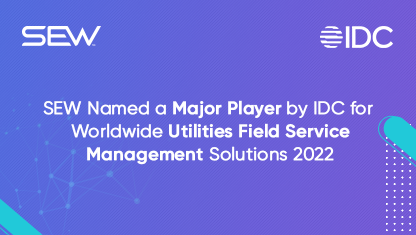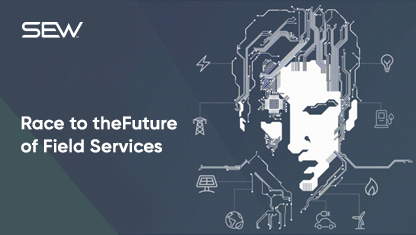
Beyond the Surface: The Importance of Smart Vegetation Management for Utilities
Energy is the backbone of our modern lives, powering everything from our smartphones to our cities. But what happens when that power is suddenly cut off? It’s not just frustrating; it can also be dangerous and disruptive. Vegetations can interfere with power lines, causing costly and inconvenient interruptions. According to a College of Natural Resources (CNUC) report, vegetation is responsible for 23% of energy outages in the United States. That’s a lot of downtime!
But the good news is that utilities worldwide are fighting back with cutting-edge technologies and innovative solutions. Energy providers are embracing exciting new tools like drones, automated tree-trimming machines, and advanced monitoring systems to stay ahead of the game. Let’s take a deep dive into the emerging trends around vegetation management and explore how these technologies can help utilities provide uninterrupted power to their customers.
Out with the Old
Vegetation management is crucial in maintaining the reliability of utility infrastructure. However, traditional methods such as fixed trimming cycles and manual inspections often prove inadequate, leading to potential hazards and outages for utilities. It is essential to understand these challenges faced by the utilities to develop efficient and effective solutions:
- Manual procedures such as patrols, inspections, and paperwork are tedious and can cause delays and information loss.
- Traditional vegetation management methods are expensive and inefficient at identifying exact hazard points and prioritizing tasks.
- Monitoring vegetation growth over geographically dispersed areas, such as dense forests and widespread regions, is challenging.
The Technology Makeover
Emerging technology is transforming the way utilities approach vegetation management. By leveraging real-time data, they can prioritize resources and proactively address potential risks, resulting in increased safety and reliability of their power network. It's a game-changing investment that can pay dividends for years to come. Let's look at some key benefits:
- With advanced AI-ML analytics and technology, utilities can save 10-15% of their vegetation management costs annually. That's a significant chunk of savings that can be better utilized in improving customer service delivery.
- Real-time risk identification using satellite imagery enables utilities to accurately pinpoint potential hazards, prioritize them, and allocate resources efficiently. This way, they can spend their budgets wisely, ensuring maximum impact.
- Empowering field workers with a mobile app can help them report incidents and execute tasks in real time, leading to improved productivity and digitization of the workflow from end to end.
- Automated data processing and issue detection can significantly reduce maintenance costs, eliminating the need for millions of kilometers of travel distance. Predictive vegetation growth management can save up to 1.5 million USD for every 100 km of network, while service costs can be reduced by up to 20%.
- By enhancing worker safety and reducing outages, customer dissatisfaction, and fatal incidents, utilities can increase customer satisfaction and improve reliability by up to 15%. That's a win-win situation for both utilities and their customers!
Making Digital Advancements
Revolutionary advancements in digital technology have brought about a remarkable transformation in vegetation management. These innovations have made managing vegetation faster, better, and safer. Let’s dive into some of the most exciting digital innovations driving this transformation.
Data Capturing:
- Drones provide a safer and more cost-effective alternative to traditional aerial surveying methods, such as helicopters and fixed-wing aircraft.
- LiDAR sensors are speeding up surveying and quickly becoming the technology of choice for data capturing.
- Satellites offer 24-hour imaging coverage, which can zoom in from macro to micro levels.
Valuable Data Streams
- Access to weather pattern prediction and its impact on vegetation growth.
- Real-time identification of wind and fire risk and its effect on growth rates.
- Identification of tree species with growth rates and patterns.
- Predictive impact of vegetation growth retardants.
Data-Driven Analytics with Intelligent Platforms:
- Artificial intelligence (AI), machine learning, predictive analytics, cloud storage, and computing enable intelligent vegetation management data.
- Machine learning can automate vegetation growth estimation, helping utilities plan to trim timelines.
- AI algorithms can monitor and analyze the right-of-way along electric lines, flagging future threats well in advance.
- Integrated digital platforms can auto-generate maintenance work orders and dispatch them to relevant field crews based on all this intelligence.
Embracing digital platforms and establishing an Integrated Vegetation Management (IVM) approach is essential for utilities looking to prevent service interruptions caused by vegetation. By taking a proactive model for vegetation management, utility companies can provide reliable service to their customers and save time and money in the long run. So, what are you waiting for? Start implementing these digital innovations today and enjoy uninterrupted service tomorrow. Your customers will thank you for it!
SEW’s Smart Vegetation Management Platform enables utilities to intelligently predict, plan, and prioritize vegetation management. The AI/ML-powered, predictive vegetation management platform allows utility providers to modernize and prioritize their vegetation management program, assess risk, and improve the safety and reliability of their power network.







